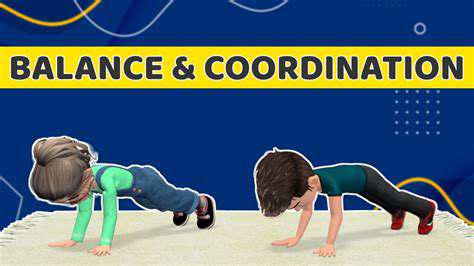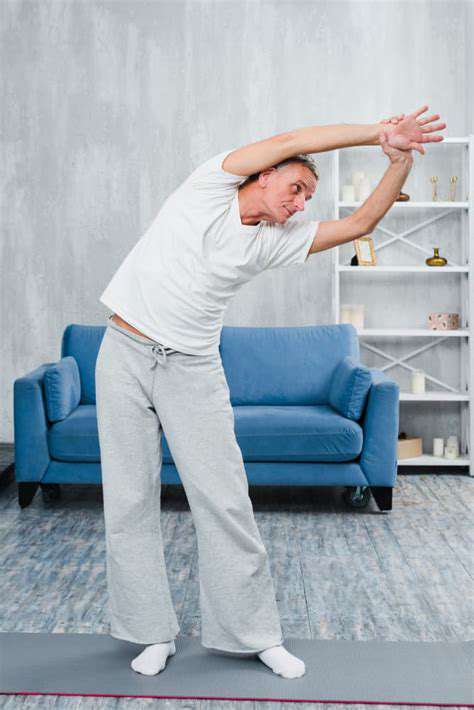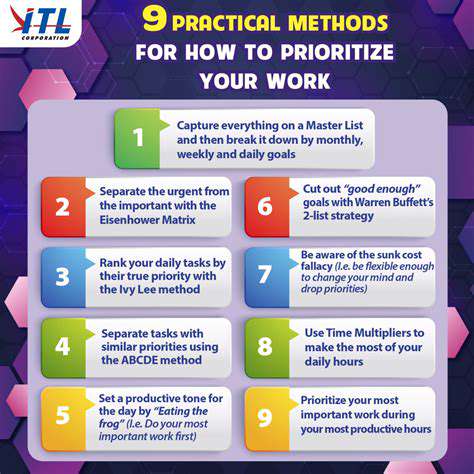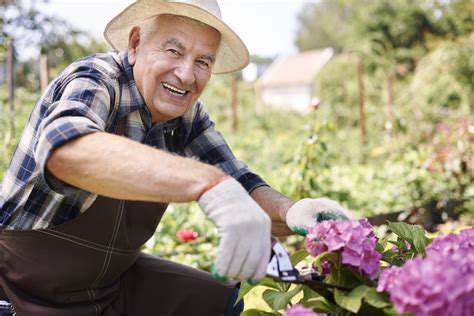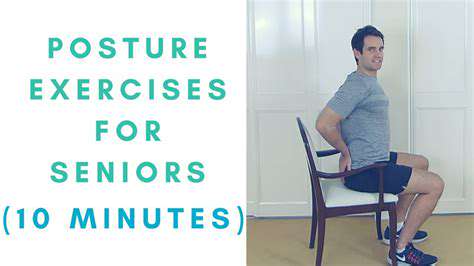Bending and Stretching Exercises for Senior Gardeners
Strengthening Leg Muscles for Enhanced Stability
Your legs are the pillars supporting your gardening passion. Squats can be practiced while pretending to plant seedlings - lowering slowly with control, then rising with power. Lunges replicate stepping over garden rows or reaching across beds. These exercises do double duty - building strength while rehearsing movements you'll use daily in the garden.
For added motivation, imagine each rep as preparing your body for another season of beautiful blooms. Strong legs mean more time enjoying your garden and less time recovering from it.
Improving Flexibility for Reaching and Twisting
Flexibility is the secret ingredient for graceful gardening. Torso twists can be performed while imagining you're checking all corners of your garden. Shoulder rotations prepare you for those hard-to-reach pruning spots. These movements maintain your body's natural range of motion - crucial for preventing those I overdid it moments.
Think of flexibility exercises as preventative maintenance for your body. Just as you'd sharpen tools before they dull completely, stretch regularly to prevent stiffness before it sets in.
Preventing Back Pain During Gardening
Back pain is the uninvited guest at every gardener's party. The solution lies in mindful movement - bending from the hips like a hinge, keeping your spine long like a sturdy stem. Use tools as extensions of your arms to minimize reaching. Take breaks to stand tall and stretch upward like a sunflower following the sun.
Your garden should bring joy, not pain. By applying these principles consistently, you'll find yourself able to garden longer and more comfortably season after season.
Arm strength transforms garden chores from exhausting to energizing. The key lies in progressive challenge - start with what feels manageable and gradually increase as your strength grows. This principle applies equally to lifting watering cans and building muscle. Your arms will thank you when pruning season arrives.
Practical Bending Exercises for Senior Gardeners
Warm-up Stretches for Enhanced Flexibility
Think of warm-ups as preparing soil for planting - both require gentle preparation for optimal results. Hamstring stretches can be paired with imaginary seed-sowing motions. Quad stretches combine well with practicing proper kneeling technique. These integrated movements make warm-ups feel purposeful rather than perfunctory.
The magic number for holding stretches isn't seconds - it's breaths. Aim for three to five deep, slow breaths per stretch. This breathing pattern naturally regulates your timing while oxygenating your muscles for better performance.
Targeted Bending Exercises for Gardening
Forward bends can be practiced while pretending to examine plants at ground level. Side bends replicate reaching across garden beds. These functional exercises train your body in context, making the movements feel more natural when you're actually gardening.
Remember the tortoise's wisdom: slow and steady wins the flexibility race. Rushing through bends defeats their purpose. Move with the deliberate care you'd use handling delicate seedlings.
Strengthening Core Muscles for Stability and Support
Your core is the greenhouse protecting your spine's delicate structure. Planks can be modified to mimic pushing up from kneeling positions - a movement you'll repeat countless times in the garden. Seated twists train your body for those moments when you need to reach tools beside you without straining.
Core strength develops like a perennial plant - slowly but surely, with consistent care. Celebrate small improvements, knowing each one contributes to your gardening longevity.
Staying Active and Injury-Free in the Garden
Warm-up Routine for Gardening
Your warm-up is the sunrise of your gardening day - it gradually prepares everything for full activity. Arm circles can be enlarged to mimic spreading mulch. Leg swings prepare you for stepping over obstacles. These purposeful movements bridge the gap between exercise and gardening.
The best warm-ups tell a story. Imagine you're preparing for specific garden tasks as you move. This mental rehearsal enhances both physical preparation and gardening efficiency.
Importance of Proper Posture
Good posture in gardening is like proper plant spacing - it prevents crowding and allows everything to flourish. When bending, imagine your spine as a straight stem that must remain intact. Your feet should be planted like sturdy shrubs, providing a solid foundation.
Periodically check your posture by noticing your shadow. A straight, tall shadow means you're aligned properly. Use this natural indicator to self-correct throughout your gardening sessions.
Bending Exercises for Gardening
Bending exercises are the yoga of gardening. Gentle squats can be synchronized with imaginary planting motions. Lunges prepare you for reaching across beds. These exercises become more meaningful when connected to actual gardening applications.
Quality trumps quantity in bending exercises. Five perfectly executed movements benefit you more than twenty sloppy ones. Focus on control rather than repetition count.
Stretching Exercises for Flexibility
Flexibility stretches are like giving your muscles a drink of water after being in the sun. Target areas you'll use most - hamstrings for bending, shoulders for reaching, back for twisting. Hold stretches until you feel the muscle release, like soil softening after rain.
Pair stretches with visualization. Imagine yourself moving effortlessly through garden tasks as you stretch. This mental-physical connection enhances results.
Strength Training for Gardening Tasks
Strength exercises are your body's fertilizer - they help everything grow stronger. Planks build endurance for sustained positions. Leg raises prepare you for high stepping over garden borders. Choose exercises that directly translate to gardening motions.
Track progress by noticing real-world improvements. Can you lift that bag of soil more easily? Prune longer without tiring? These practical benchmarks matter more than numbers on weights.
Wrist and Hand Care During Gardening
Your hands are your most precious gardening tools. Treat them with the care you'd give rare plants. Ergonomic tools act like supportive trellises for your joints. Regular breaks are like giving your hands shade during the hottest part of the day.
Listen to your hands' whispers so you don't have to hear their screams later. Minor discomfort today can prevent significant pain tomorrow.
Cool-down and Recovery
Your cool-down is the sunset to your gardening day - a gentle transition to rest. Stretch while admiring your work, combining physical recovery with emotional satisfaction. Focus on areas that worked hardest, thanking them for their service.
View cool-downs as the first step toward your next gardening session. Proper recovery today means you can garden again tomorrow. This long-term perspective makes cool-downs feel like an investment rather than an afterthought.




